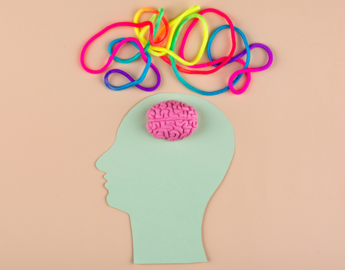What is Universal Design for Learning (UDL)?
UDL is a set of design principles to guide the creation of learning experiences that are beneficial to the largest number of learners (Institute for Human Centered Design, 2016). At its core, UDL prompts us to consider the complexity of learning, including the diversity of learners in our classrooms, the varied backgrounds and knowledge they bring to the learning task, the learning context, and any obstacles to learning.
Three principles guide instructors in the task of structuring inclusive learning experiences:
- Multiple Means of Engagement outlines ways in which learners can meaningfully engage in learning.
- Multiple Means of Representation offers ways in which learners can access course materials and information.
- Multiple Means of Action & Expression relates to ways in which learners demonstrate their learning (CAST, Inc. 2025).
Lesson checklist
- Familiarize yourself with the three principles of UDL
- Consider UDL strategies that are relevant to higher education
Multiple Means of Engagement
There are many ways for instructors to increase student involvement, motivation and engagement in post-secondary courses. Questions to consider when incorporating multiple means of engagement in a course are:
- How can you incorporate variety in your teaching approaches and student learning activities?
- How might you incorporate student interaction and collaboration into your course?
- How might technology be used to engage students in authentic learning?
- What opportunities exist to incorporate student choice?
- How can you encourage student self-regulation and personal coping skills (La et al., 2018)?
The following themes are relevant to multiple means of engagement in higher education. Specific examples are included below.
- Student selection of assignment topic.
- Self-select discussion groups based on interest.
- Incorporate student goal setting.
- Use checklists for students to monitor their progress.
- Incorporate authentic learning.
- Provide a context for new learning and how it relates to previous topics, the course and the field of study.
- Enable students to engage in experiential learning projects to help them advance their critical thinking and problem-solving skills.
- Incorporate research projects in your courses that may lead to discovery and innovation.
- Evaluate the output of generative artificial intelligence for biases.
- Provide cues for pacing in the course using a variety of tools, such as the learning management system (LMS) calendar, checklists and weekly emails with important dates and deadlines.
- Incorporate in-class or online discussions.
- Encourage study groups.
- Collaborative activities could be graded or non-graded and are possible in both face-to-face and online courses.
State the learning outcomes relevant to each assignment.
- Introduce learning goals with a new topic and touch on prerequisite knowledge.
- Provide supplementary resources for learners who may have forgotten some of the basics.
- Start with introductory examples and build up to more complex ones.
- Design courses for inclusivity.
- Create inclusive course outlines.
- Learn about anti-racism, EDI and positionality in teaching and learning.
- Use learning technologies to present content in different ways, such as a digital welcome note.
- Have students set learning goals for the course.
- Give out grading rubrics at the beginning of an assignment to prompt self-evaluation.
- Offer checklists for students to track their own progress.
- Use practice quizzes for immediate student feedback on their learning (La et al., 2018).
- Diversify course content through multiple sources and authors
- Incorporate multiple perspectives through activities such as discussions about case studies.
- Break up a lecture with discussions or learning activities such as a think-pair-share.
- Embed sample exam questions in lecture notes.
- Consider using different pedagogical approaches, such as problem-based learning or case studies.
Incorporate the notion of crip time (Mason, 2023b)
- Give students time to pause and think during courses. Strategies such as recordings allow for flexibility, pausing and accessing lectures multiple times.
- Think about crip time in your own work. Incorporate flexibility and challenge ideas of productivity during times of high activity or stress (Mason, 2023b).
- Examine your teaching practices for ableism and disabling learning environments.
- Use a circle practice for the learning community to check in with one another.
- Encourage students to have an accountability partner to share responsibility within the learning community.
- Practise a pedagogy of kindness.
Multiple Means of Representation
UDL can be incorporated into courses through multiple means of representation, or ways in which course content and ideas are conveyed to learners. By incorporating a range of presentation methods, such as lectures, readings and videos, students are prompted to be adaptable in their approach to learning course content.
This principle also extends to pedagogical approach. For example, an instructor might introduce a topic through a lecture and have students apply it through in-class exercises or activities. After that, students might complete a case-study assignment.
Questions relating to incorporating multiple means of representation include:
- How might you present main course concepts in more than one format?
- What learning activities could you use to emphasize comprehension of key concepts?
- How might you informally gauge student understanding of course content?
- What range of pedagogical approaches might you incorporate into your course (La et al., 2018)?
- Create accessible course content.
- Use features of the learning management system (D2L) for small group work, links to readings and resources, practice quizzes, videos and other features.
- Use accessibility tools in Brightspace (D2L).
- Aim for learning technologies that are easy to use on a variety of devices and freely available, such as campus-supported tools.
- Include text to speech for videos and recorded class presentations.
- Use models, graphics, frameworks, charts and graphs, in addition to text and lectures.
- Use different pedagogical approaches to topics or concepts, such as logic, statistics, narrative, case studies, multiple perspectives, group work and testimonials.
- Web-based courses can also incorporate a wide variety of teaching and learning activities.
- Encourage participation in online synchronous classes via Zoom using activities such as think-pair-share.
- Create accessible course content.
- Put a copy of the course text on reserve in the library, and order a digital version for the library if possible.
- Use open education resources (OERs).
- Connect course information to previous course work.
- Connect course information to courses earlier in the program.
- Highlight patterns and themes between ideas, and have students create a concept map.
- Review key concepts at the beginning of a lecture (La et al., 2018).
- Use outlines and graphic organizers (College of William & Mary School of Education, 2014).
- Students create a graphic organizer summary of a topic.
- Students create their own glossary of terms throughout the course.
Multiple Means of Action & Expression
In higher education, multiple means of action and expression is often associated with student assessment and feedback. This principle focuses on student demonstration of learning in various ways, including variety in assessments and authentic assessments. Some questions to consider when incorporating multiple means of action and expression into course assessments include:
- How might you incorporate multiple means of expression on exams and assignments?
- How might you provide opportunities for feedback throughout the course?
- What choices might you offer students regarding assignments?
- What course design decisions can you make to mitigate student anxiety regarding assessment?
- Variety of question types on exams: Multiple choice, matching, short answer, fill in the blank, equations, label a diagram.
- Assessments that ask students to demonstrate various ways of understanding: Written answer, problem solving, apply concepts and theories, factual recall, case study and so on.
- Provide opportunities to develop skills in real or simulated settings
- Different methods of demonstrating skills, such as simulations, role play, debate, discussions, reflection papers.
- Question and answer in class.
- Student response systems to see what the students comprehend.
• Use question sets from the textbook as practice.
• In-class peer feedback.
• In-class critiques of sample assignments.
- Outline your expectations using assignment guidelines.
- Show sample assignments with feedback and how they were graded (if appropriate).
- Use sample quizzes in the learning management system for practice and rapid feedback.
- Choice of due date or topic (if appropriate).
- Choice of assignment format: Paper, presentation, website, infographic and so on (La et al., 2018).
Additional resources
Incorporating Universal Design for Learning in disciplinary contexts in higher education. https://taylorinstitute.ucalgary.ca/resources/incorporating-universal-design-for-learning-in-disciplinary-contexts-in-higher-education-guide
Universal Design for Learning: Inspiring equity and inclusion in higher education. https://udlontario.georgebrown.ca. This online module includes collaborative exercises for groups to work through together.
References
CAST, Inc. (2025). The UDL guidelines. https://udlguidelines.cast.org
College of William & Mary School of Education. (2014). Graphic organizers: Guiding principles and effective practices considerations packet. College of William & Mary in Williamsburg. https://education.wm.edu/centers/ttac/documents/packets/graphicorganizers.pdf
Institute for Human Centered Design. (2016). History of Universal Design.
https://humancentereddesign.org/inclusive-design/history
La, H., Dyjur, P., & Bair, H. (2018). Universal design for learning in higher education. Taylor Institute for Teaching and Learning, University of Calgary. https://taylorinstitute.ucalgary.ca/resources/universal-design-learning-higher-education
Mason, D. (Executive Producer & Host). (2023b, November 8). Episode 3: Can we think differently about time? With Alan Santinele Martino. In Three questions about teaching and learning. Taylor Institute for Teaching and Learning, University of Calgary. https://taylorinstitute.ucalgary.ca/resources/podcast/3qtl#alan-martino







